January 2025
The global medical tricorder market size is calculated at USD 4.81 billion in 2025 and is forecasted to reach around USD 9.48 billion by 2034, accelerating at a CAGR of 7.83% from 2025 to 2034. The North America medical tricorder market size surpassed USD 1.69 billion in 2024 and is expanding at a CAGR of 8% during the forecast period. The market sizing and forecasts are revenue-based (USD Million/Billion), with 2024 as the base year.
The global medical tricorder market size was estimated at USD 4.46 billion in 2024 and is anticipated to reach around USD 9.48 billion by 2034, expanding at a CAGR of 7.83% from 2025 to 2034. Growth is attributed to the increasing demand for portable, accurate, and cost-effective diagnostic solutions in both developed and emerging regions, which is spurring demand in the medical tricorder market.
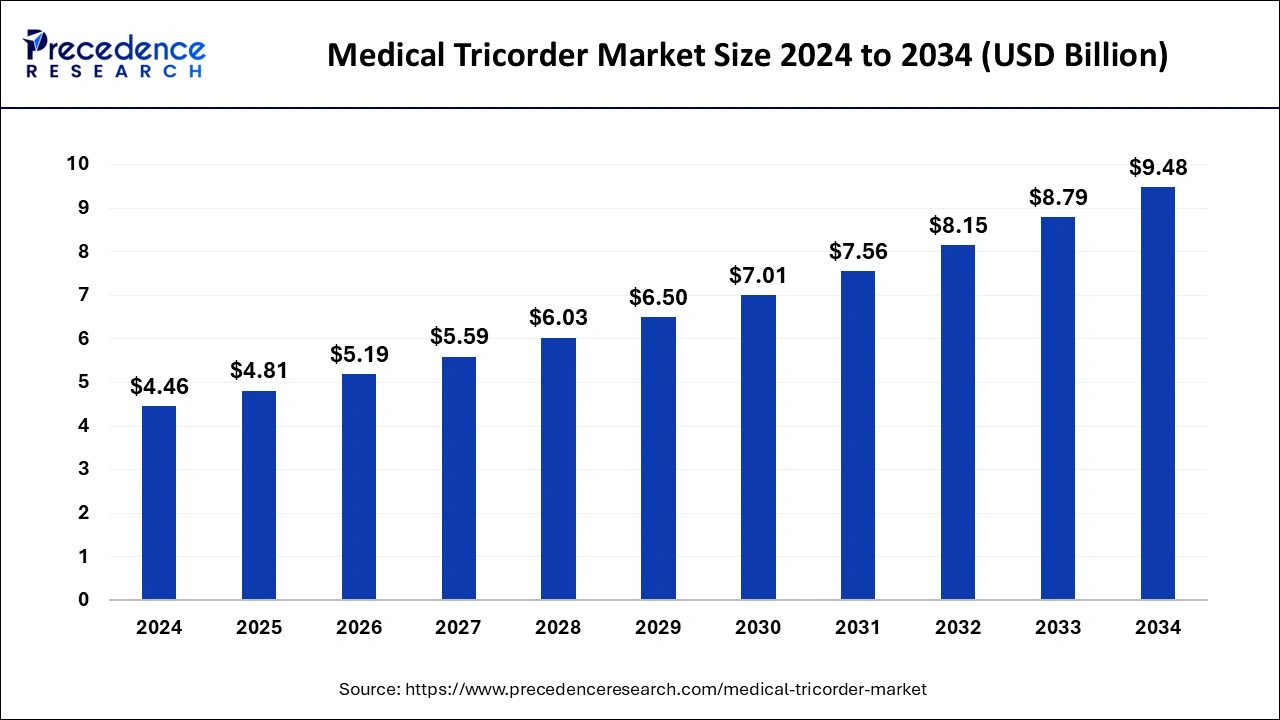
Advanced technologies like Artificial Intelligence (AI) are driving progressive changes in the medical tricorder market, to make the devices improve their diagnostic performances significantly. AI is used to sort massive amounts of data or dataflow much faster to detect patterns and deviations beyond the ‘vision’ of conventional equipment. Busy people want accurate information, and by decreasing diagnostic mistakes, and promoting the early detection of diseases, AI increases reliance on different tools among opinion leaders and the population. AI is constantly developing, and in doing so it advances progress guaranteeing that sophisticated medical tricorders fulfill the increased requisite for effective, affordable, and accurate health care applications.
The U.S. medical tricorder market size was evaluated at USD 1.27 billion in 2024 and is predicted to be worth around USD 2.76 billion by 2034, rising at a CAGR of 8.07% from 2025 to 2034.
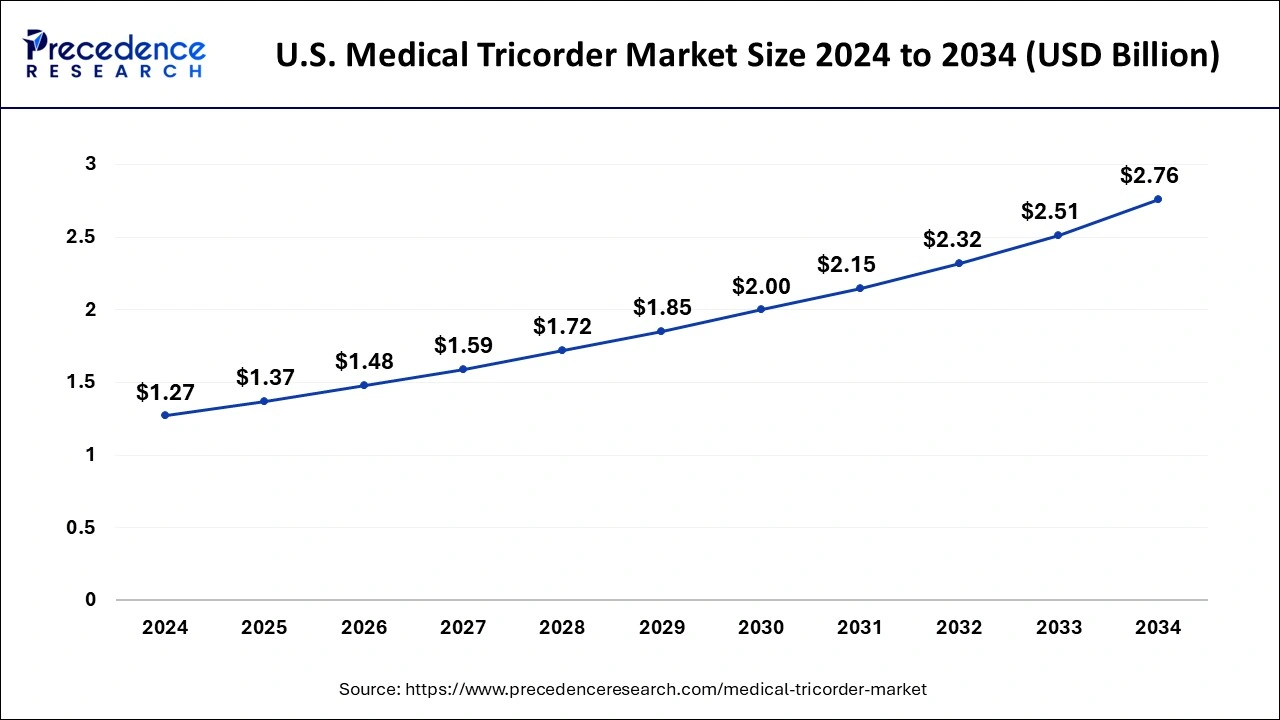
On the basis of region, the medical tricorder market is used in North America, Europe, Latin America, Asia Pacific regions. The North American region dominates the use of tricorders, followed by Europe. In Asia Pacific regions due to the favorable reimbursement policy and increase in the healthcare the North American market is dominating the market with the largest market share of 38% in 2024. Technological advancements in the infrastructure and an increased disposable income has also led to a growth in all of these regions.
The Asia Pacific region provides many opportunities for the growth of this market. There is an increased awareness among the patients and favorable government initiatives that are creating opportunities for the growth of this market.
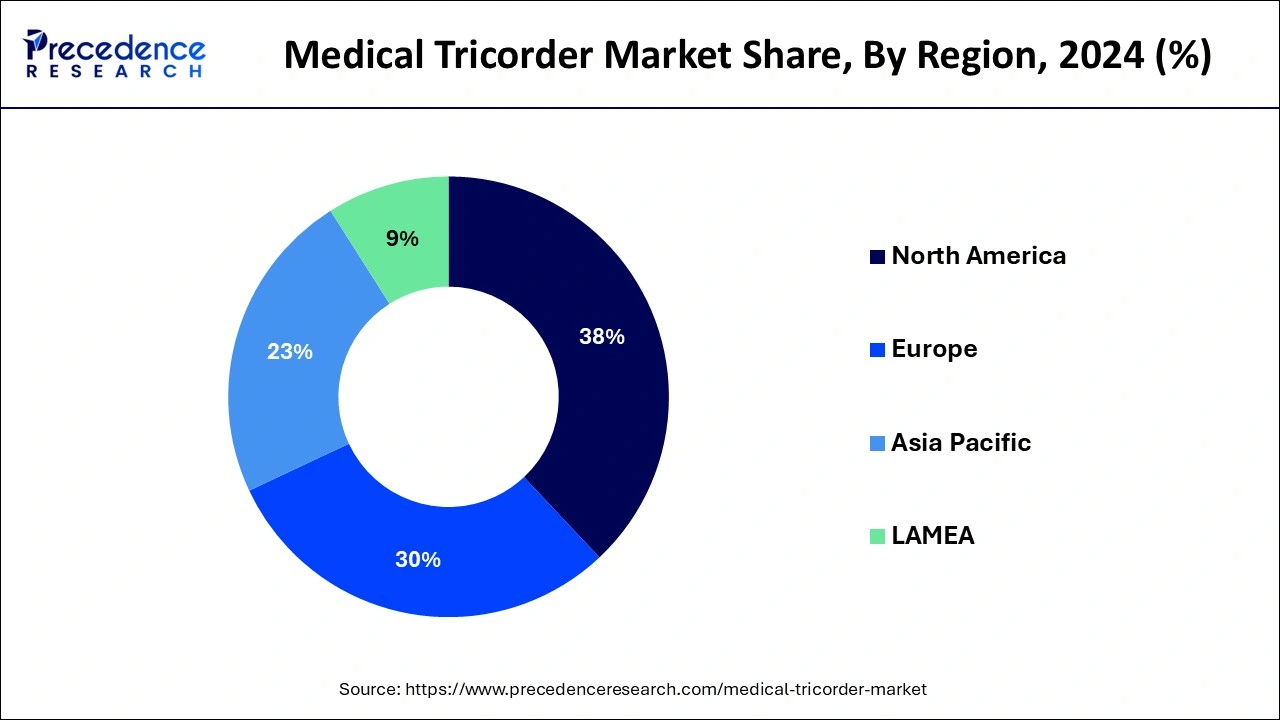
A medical tricorder is a handheld and a portable scanning device which is used by various consumers to diagnose medical conditions and take the basic body vital measurements within seconds. The market for the medical tricorder is expected to grow during the forecast period due to various cardiovascular diseases and an increase in the awareness of these diseases among the patients. Nations are investing in technological advancements and research and development activities. In order to see the growth of this market medical tricorder comes with a detachable handheld scanner with high resolution that transmits the vital data to the tricorder. The companies that function in medical tricorders are focusing on developing technological solutions, in order to strengthen the position of medical tricorders.
Demand for medical tricorder devices had raised during the pandemic as people wanted to self-diagnose at home in order to generate the temperature and other body vitals. In order to avoid any possibility of spread of COVID-19 the patients were refraining for visiting doctors and hence the tricorder was used largely during the pandemic. Extensive use of the medical tricorder in diagnosing various body vitals during the pandemic has been a boon as helped in avoiding excessive human interactions.
| Report Coverage | Details |
| Market Size in 2025 | USD 4.47 Billion |
| Market Size by 2034 | USD 12.7 Billion |
| Growth Rate from 2025 to 2034 | CAGR of 12.3% |
| Largest Market | North America |
| Base Year | 2024 |
| Forecast Period | 2025 to 2034 |
| Segments Covered | Type, Application, End-User, Geography |
| Regions Covered | North America, Europe, Asia-Pacific, Latin America, and Middle East & Africa |
Increasing Demand for Early Disease Detection
Growing awareness about the importance of early diagnosis is anticipated to drive demand for medical tricorder devices. Clients and physicians pay more attention to gadgets that can discover diseases in their preliminary phases, thus cutting costs and enhancing results. Such gadgets allow for objective and painless, rapid evaluations of important indices and markers, which are appreciated by both the patient and the specialist. Early diagnosis, governments, and health organizations pay much attention to this area, especially on diabetes and cardiovascular diseases. This aligns well with increased health costs across the globe, thus increasing acceptance in developed and emerging economies.
Hamper Adoption Due to High Initial Costs
High initial cost of medical tricorder devices is anticipated to restrain their widespread adoption, particularly in low-income and developing regions. The additional incorporation of elaborate elements, including artificial intelligence algorithms and certain sensors to correlate production costs with prices in the market. It transpires those small clinics and individual entities such as clinics far from a big city, established in underserved areas lack the necessary financial capital and resources that be invested in such improvements. Manufacturers face the problem of affordable costs as they work to retain high levels of technology, which reduces market penetration rates.
Growing Adoption of Remote Patient Monitoring
Increasing popularity of remote patient monitoring solutions is expected to create immense opportunities for the medical tricorders market. These tools help to advance telemedicine since it is possible to accurately diagnose diseases using home equipment that appeals to patrons who have scarce access to health facilities. There is a positive attitude toward adopting such technologies because governments and insurers stress reliance on remote care to cut healthcare expenses. It also increases the desirability of medical tricorders as essential in the current healthcare systems.
On the basis of the type, the global market for medical tricorder is categorized into fiber optic camera, wireless, corded, USB camera and others. The wireless segment had the largest market share during the recent years and it is expected to have a good growth during the forecast due to an extensive deployment of wireless medical tricorders. The end users across the nations had led to an increase in the market share without the performance of any invasive diagnostic tests, many health parameters of the patients can be noted.
The global medical tricorder has use at many places like hospitals and ambulatory surgical centers or others. The hospitals segment contributed the highest market share of 63% in 2024. As the hospitals are increasing and extremely accessible to patients there is a growth in this market. The demand for the medical tricorder is expected to grow during the forecast period as there are many reimbursement policies that boost the market.
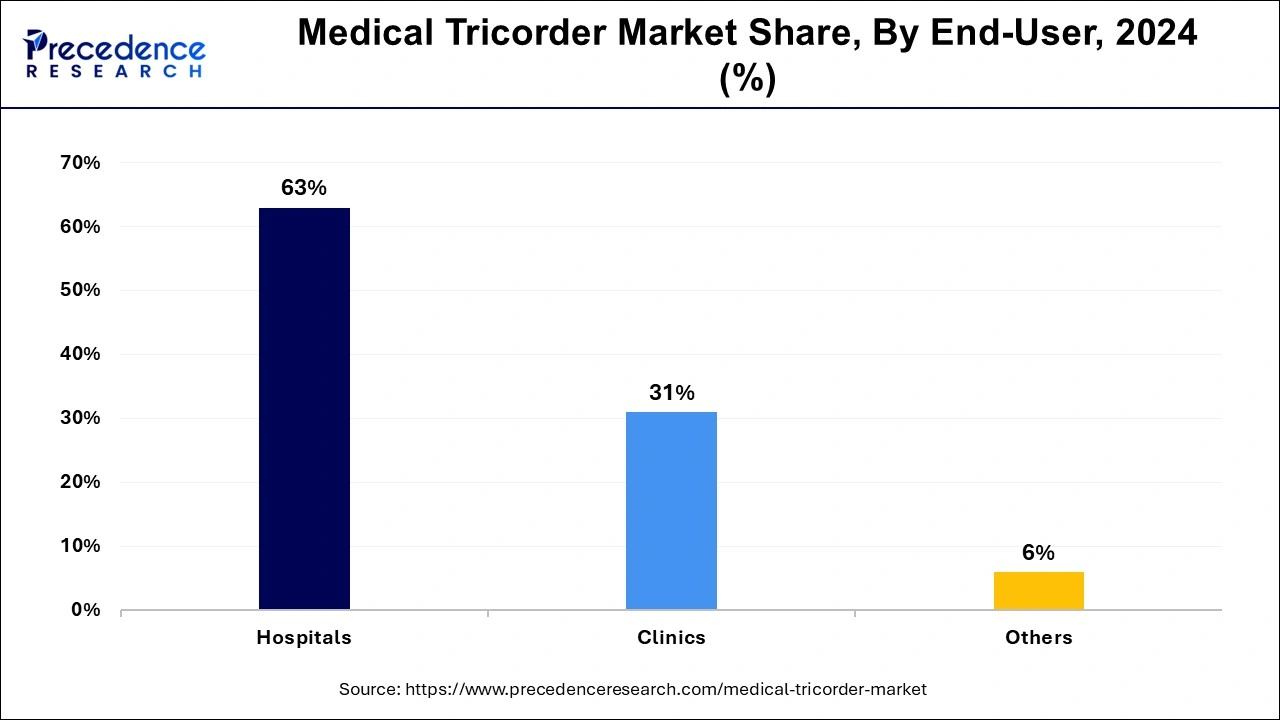
Due to an increase in the demand for outpatients, the ambulatory surgical centers are also making use of the medical tricorders. The market for medical tricorders has grown in the health care systems due to the use for diagnosis of patients by various doctors, surgeons, clinicians and nurses. This segment has show great growth during the pandemic as it was able to diagnose the patient by keeping safe distance.
The basis of application the global market shall be categorized into monitoring, diagnosis and other applications. The diagnosis segment is expected to have the largest share during the forecast period and it has grown well in the recent years. In the recent years, due to pandemic there is a wide use of medical tricorders attempts in diagnosing many chronic diseases like cancer, asthma, Diabetes, cardiovascular diseases, tuberculosis, stroke, arthritis and dementia. Advancement in the healthcare technologies and adoption of increasing diagnostic devices has led to the growth in the market. The sedentary lifestyle has led to many diseases, and as the consumers are aware of these lifestyle related diseases, the use of medical recorders is expected to grow.
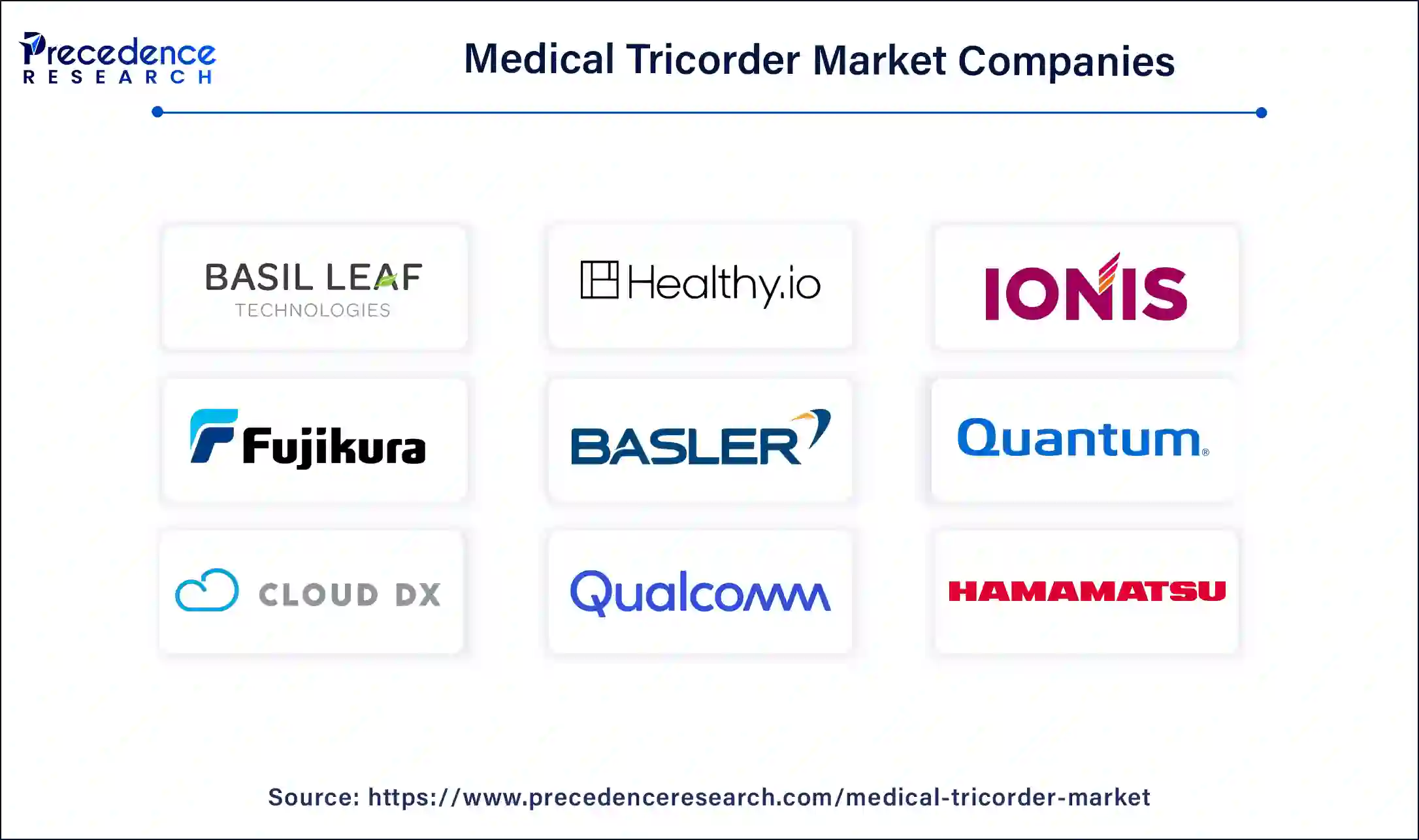
By Type
By Application
By End-User
By Geography
For inquiries regarding discounts, bulk purchases, or customization requests, please contact us at sales@precedenceresearch.com
No cookie-cutter, only authentic analysis – take the 1st step to become a Precedence Research client
January 2025
March 2025
August 2024
January 2025